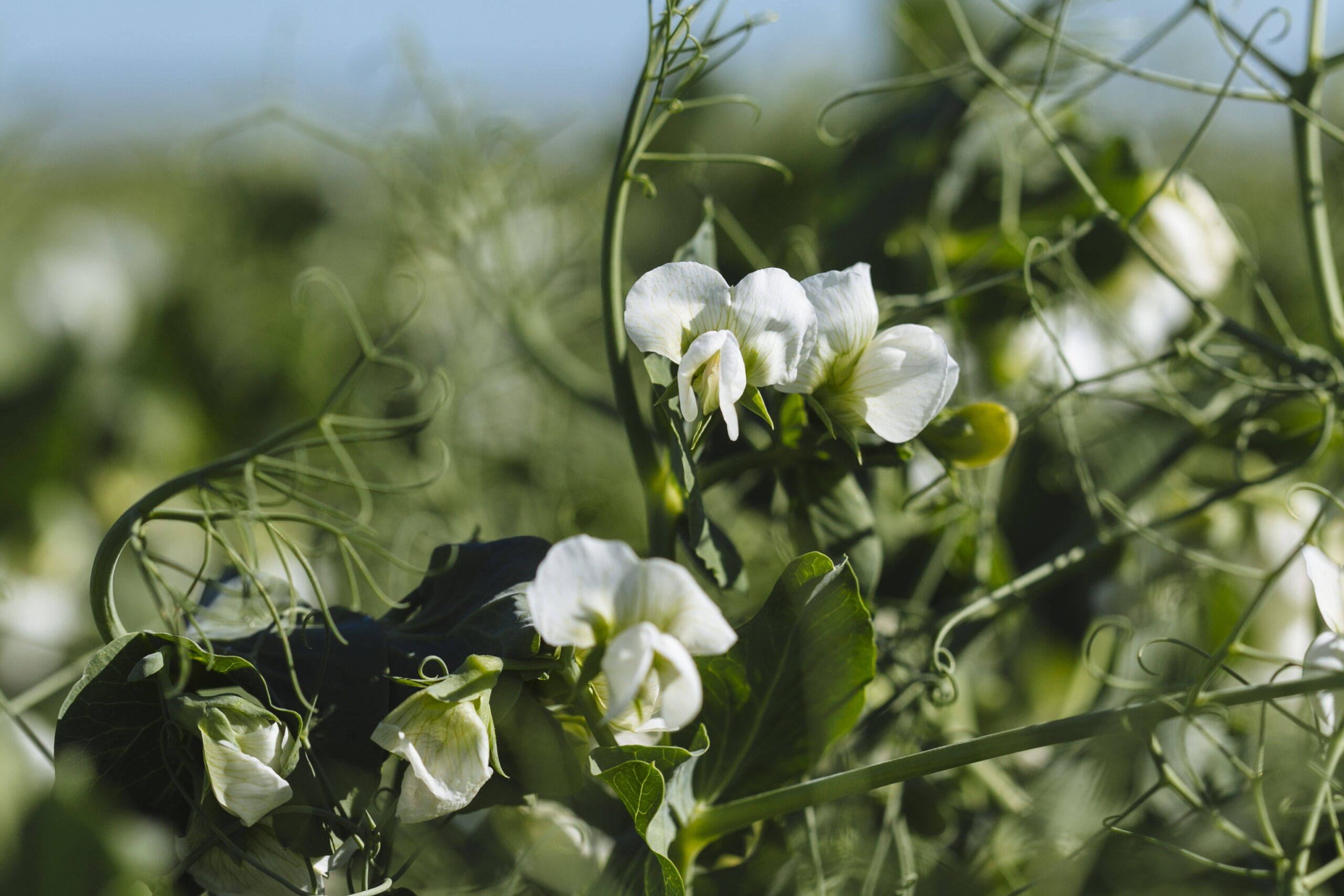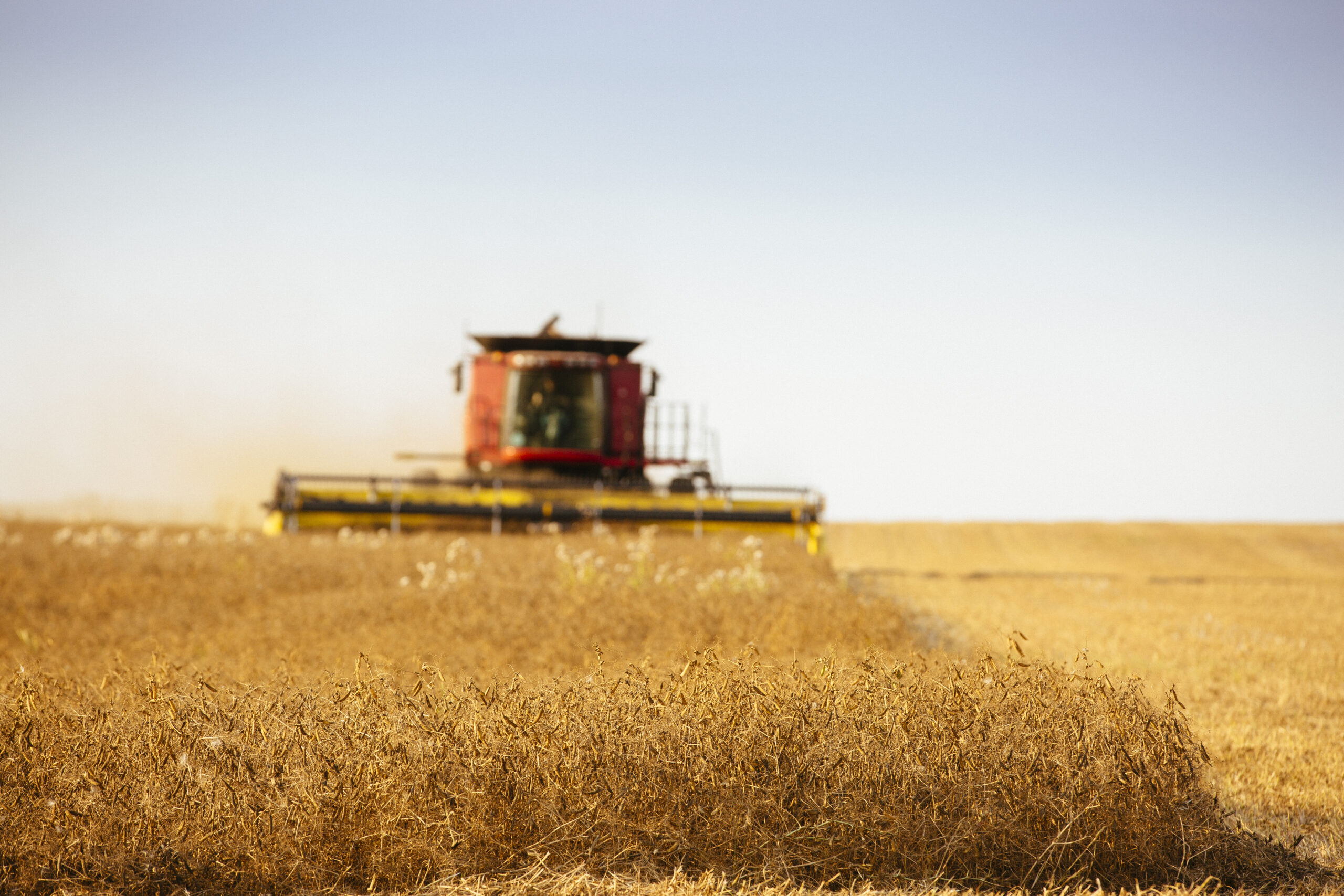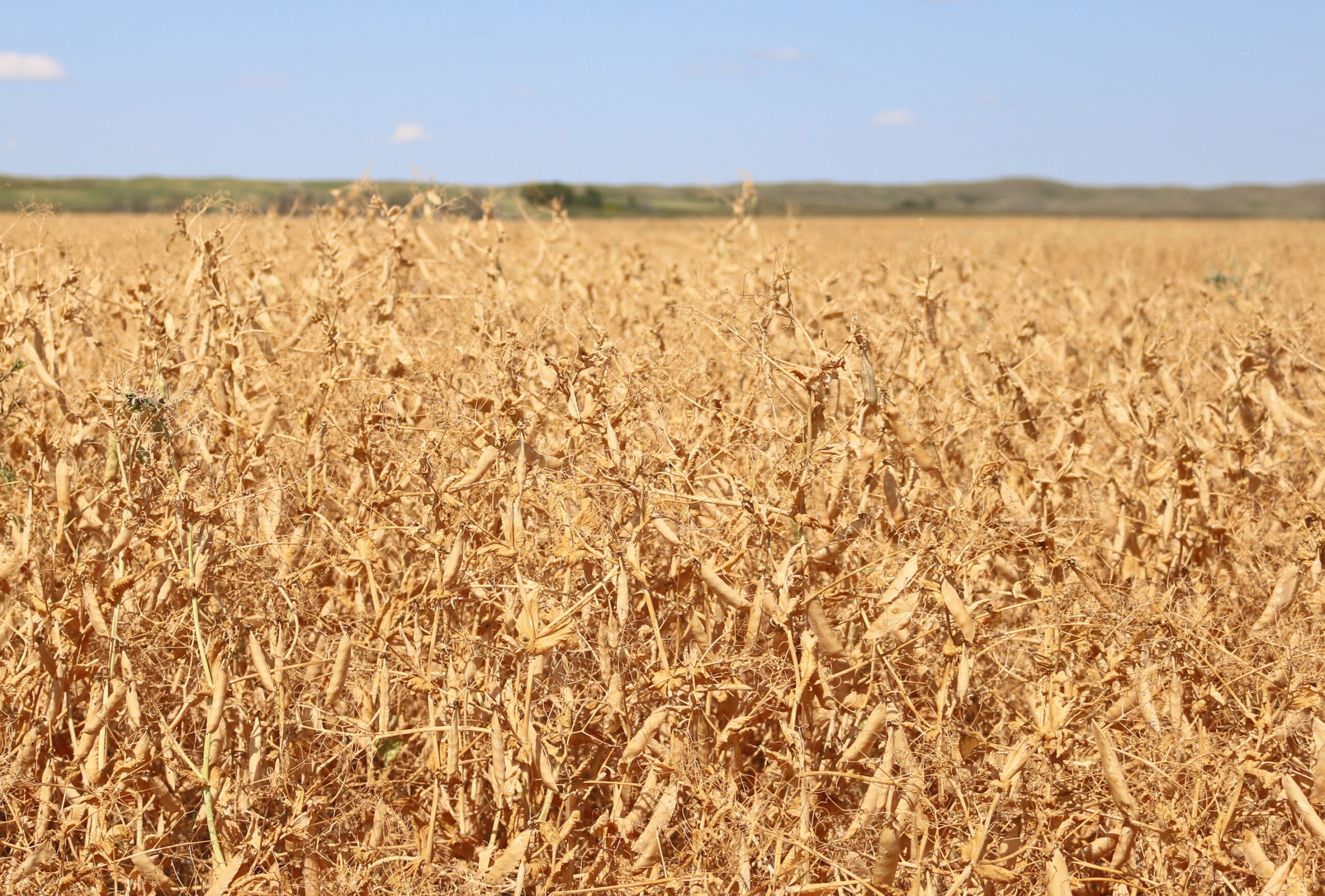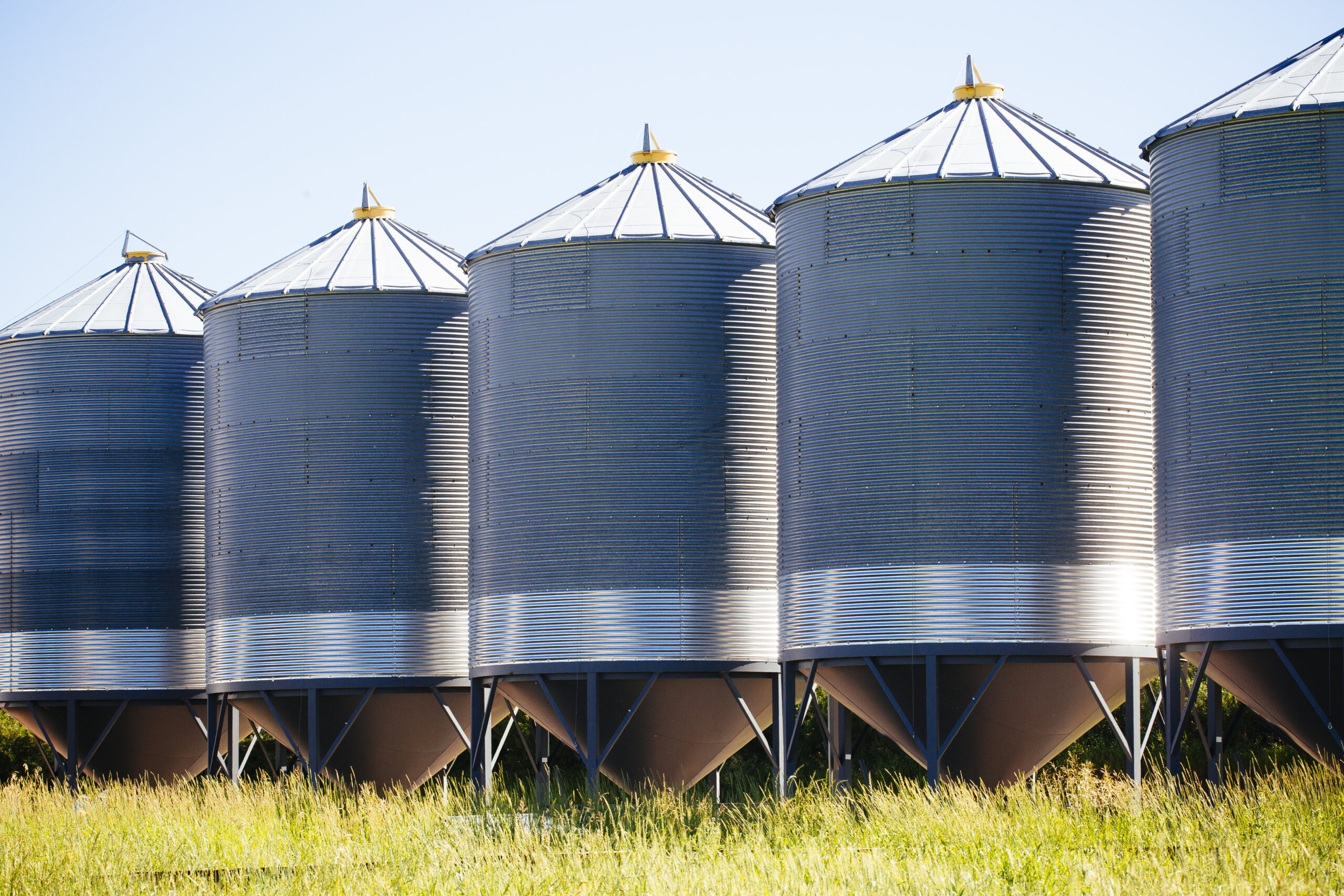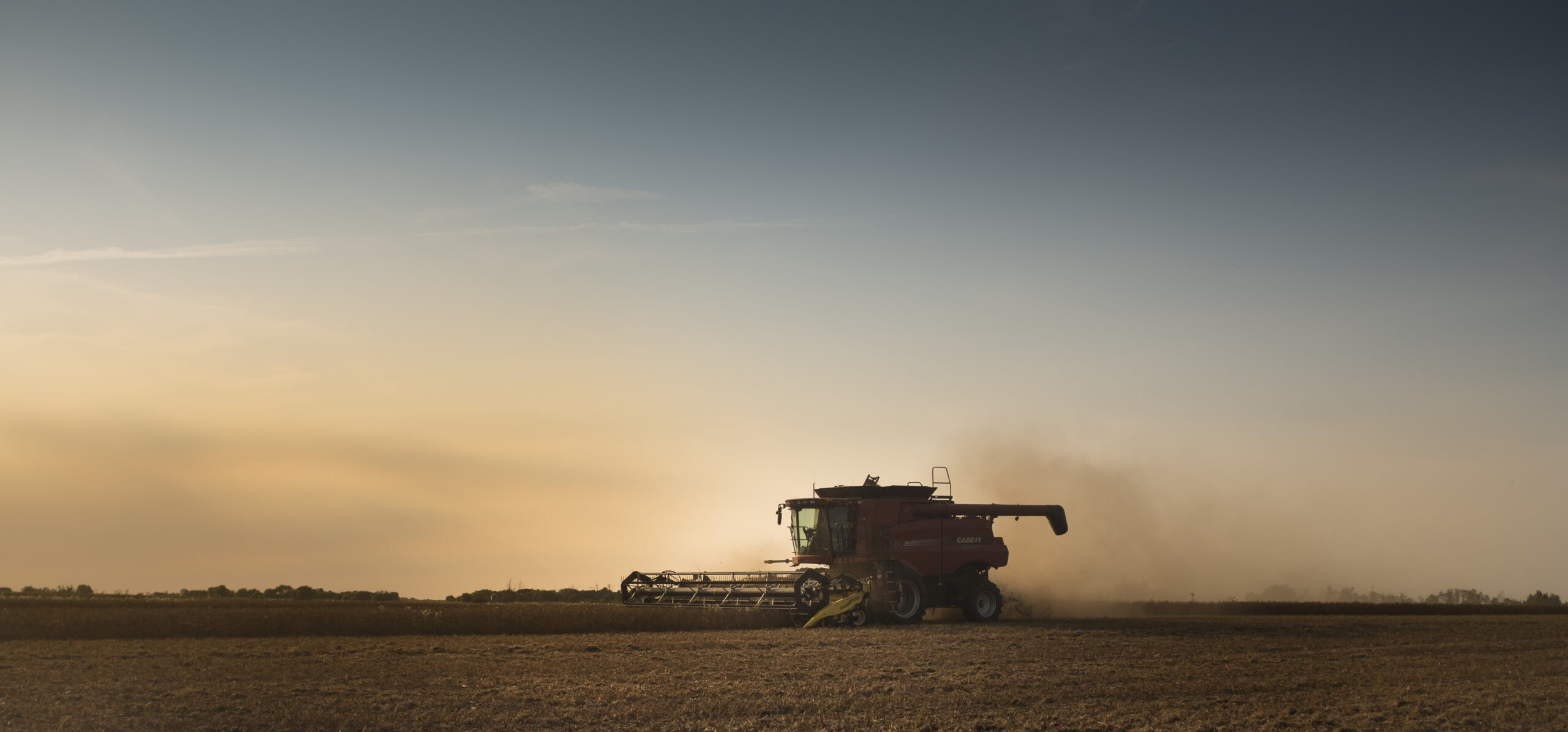Pea plants mature from the bottom to the top and are near maturity when the bottom 30% of pods are ripe, the middle 40% of pods and vines are yellow-coloured, and the upper 30% of pods are turning yellow.
This is the stage to swath or desiccate if either of these harvest methods is chosen. Harvesting too soon will result in immature seeds in the sample and can cause downgrading. Waiting too long can result in excess shattering and increase the chance of weathering damage.
The most important grading factor for the human market in green cotyledon peas is seed colour. The maximum allowable bleach level for green peas destined for human consumption is 2%. Green varieties are susceptible to bleaching as they near maturity. Bleaching of seed is caused by high humidity, bright sunshine, and warm temperatures. For this reason, extra care should be taken to harvest green pea varieties as soon as possible. In green peas, the vein pattern in the upper-most pods should be easily recognizable and 75–90% of the pods should have turned to yellow tan.
Peas can also be left to straight cut without desiccation. Pea crops are mature when seeds in the bottom pods are detached and loose in the pods, and when the upper pods turn yellow. Once the crop is mature it can dry down very quickly if the weather is warm and dry.
Care should be taken when harvesting peas for human consumption. Pea seed samples containing excessive amounts of foreign material or cracked, peeled, or discoloured seeds are suitable only for the feed market. Soil adhered to the seed is called earth tag and is a common factor in downgrading dry peas. Earth tag may occur during combining when moisture from weeds or heavy dew causes soil or dust to stick to the seed.
Swathing
Swathing will hasten drying and prevent shattering, but pea swaths are extremely susceptible to damage from wind. Swathers should be equipped with vine lifters (pick-up guards) and/or a pick-up reel to ease the harvest of lodged or tangled crops. The swather can also be used to cut the crop at full maturity. If cut at full maturity, the combine should follow immediately behind to prevent swaths from being damaged or moved by wind. Shattering loss can be high using this method.
Chemicals For Harvest Management & Desiccation
Chemical pre-harvest desiccation may reduce the time from maturity to threshing readiness and reduce shatter loss in field peas. Desiccation may also result in improved quality if the crop is harvested before being exposed to wet weather, compared to a crop left to mature on its own and being subjected to wet weather. The benefit of chemical desiccation is the opportunity to have the crop harvested sooner, reduced risk of exposure to wet weather, and eliminating the risk of swath movement from the wind. Standing desiccated crops will also dry more rapidly after rain, compared to a crop in a swath. If some areas of the field are immature, it is better to go around those areas when desiccating if the goal is the highest quality seed production.
Pre-harvest glyphosate should be applied when the crop has 30% or less grain moisture. Recommended staging for preharvest applications of glyphosate in peas is when the majority (75–80%) of the pods are brown. Do not apply glyphosate to pea crops destined for planting seed because irregular germination and seedling development can occur. Applying glyphosate too early can reduce yield and seed size and may result in levels of glyphosate in the seed that exceed the maximum allowable levels.
Powdery mildew and heavy weed infestations can reduce the effectiveness of the chemicals due to coverage reductions. Chemical desiccation can be very effective for green peas, reducing the time to harvest and resulting in a good green-coloured seed.
Combining
Straight combining without desiccation can be successful, however, there is a risk of shatter loss, and the crop must be uniformly mature across the field before threshing can be completed. Shattering can be reduced by harvesting during the humid part of the day, and by reducing the reel or pick-up speed to keep the action against the crop to a minimum. This harvest method can be very successful if the crop is at the same stage through the field, maturity has been reached relatively early, and the weather is hot and dry at harvest. If using a straight-cut header, it should be equipped with vine lifters (pick-up guards) and/or a pick-up reel to ease the harvest of lodged or tangled crops.
Although peas are considered dry at 16% moisture, harvesting at approximately 18–20% moisture will reduce the risk of seed cracking or peeling and reduce shatter losses. This also results in an earlier harvest and can reduce weathering loss. Threshing over 20% can increase the amount of earth tag. Low combine cylinder or rotor speeds are required to reduce seed cracking. Speeds of 300–600 revolutions per minute are normally used, depending on the moisture content of the pea sample. An initial concave setting of 0.6–1.5 cm clearance at the front and 1.2 cm at the rear is recommended. Combine and grain augers should be operated fully and at low speeds to reduce the cracking and splitting of seeds. General recommendations for settings include low cylinder speeds, ample concave clearance, and maximum wind velocity.
When combining a swathed pea crop, match the pick-up speed to the combine’s ground speed. Keep the swath moving uniformly to match the combine capacity to reduce seed damage and shatter losses.
